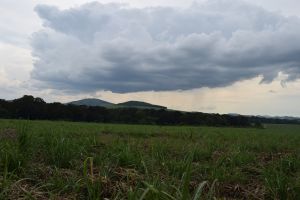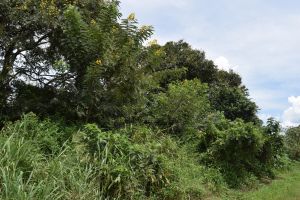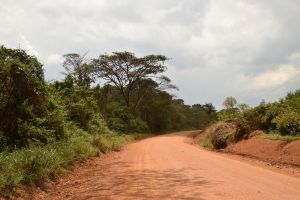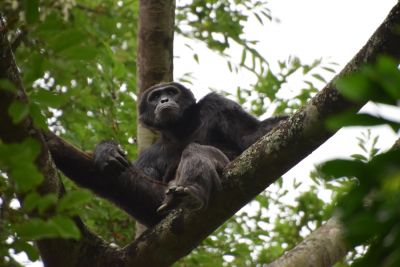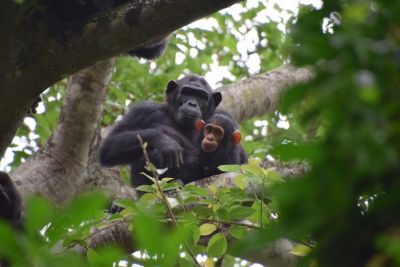Kasokwa-Kityedo Forest Project
East Africa > Uganda > Kasokwa-Kityedo Forest Project
Summary
- Eastern chimpanzees (Pan troglodytes schweinfurthii) are present in the Kasokwa-Kityedo Forest Project.
- Approximately 25 to 30 individuals occur in the Kasokwa-Kityedo forest fragments.
- The chimpanzee population trend is stable.
- The site has a total size of 1.8 km².
- Key threats to chimpanzees are human encroachment, and hunting snares and traps intended for other animals.
- Conservation activities have focused on education and raising awareness; the presence of a research project also provides some protection.
Site characteristics
This site is part of a series of forest fragments that historically would have been connected to the greater Budongo Forest. Two main fragments are the focus of the project. Kasokwa Central Forest Reserve is a tiny riverine forest located along the road from Masindi toward Budongo Forest. The Kityedo forest area is located entirely within the property of Kinyara Sugarworks.
Table 1. Basic site information for Kasokwa-Kityedo Forest Project
| Area | 1.8 km² |
| Coordinates | 1.64 N, 31.61 E |
| Designation | Unclassified |
| Habitat types | Subtropical/tropical moist lowland forest |
IUCN habitat categories Site designations
Ape status
No formal survey has been done. The area is small; chimpanzees in the area are known. The inhabitants of Kasokwa Forest have in recent years adopted a trend of moving between their original forest and the Kityedo Forest. Some of the original inhabitants have not been seen for a couple of years, so they may have moved even further into another fragment. Thus, the population estimate of the study group is approximately 26 to 30.
Table 2. Ape population estimates in Kasokwa-Kityedo Forest Project
| Species | Year | Abundance estimate (95% CI) | Density estimate [ind./ km²] (95% CI) | Encounter rate (nests/km) | Area | Method | Source | Comments | A.P.E.S. database ID |
|---|---|---|---|---|---|---|---|---|---|
Threats
The most important ongoing threat is the setting of snares by local hunters and encroachment on the forest by local people occasionally cutting trees.
Table 3. Threats to apes in Kasokwa-Kityedo Forest Project
| Category | Specific threats | Threat level | Quantified severity | Description | Year of threat |
|---|---|---|---|---|---|
| 1. Residential & commercial development | Absent | ||||
| 2. Agriculture & aquaculture | 2.1 Annual & perennial non-timber crops | Low | Sugar plantation and local small-holder farmers growing sugar (and other crops) result in "raiding" and occasional conflict (Wallis pers. comm. 2020). | Ongoing (2020) | |
| 3. Energy production & mining | Absent | ||||
| 4. Transportation & service corridors | 4.1 Roads & railroads | Low | Road running along the north of Kasokwa Forest is occasionally crossed by the chimpanzees visiting crops (Wallis pers. comm. 2020). | Ongoing (2020) | |
| 5. Biological resource use | 5.1 Hunting & collecting terrestrial animals | Medium | Unintentional effects. I.e., people do not hunt chimpanzees, but chimpanzees risk being accidentally ensnared in snares and traps set for other animals (Wallis pers. comm. 2020). | Ongoing (2020) | |
| 5.3 Logging & wood harvesting | Low | Sugar plantation and local small-holder farmers growing sugar (and other crops) result in "raiding" and occasional conflict (Wallis pers. comm. 2020). | Ongoing (2020) | ||
| 6. Human intrusion & disturbance | 6.3 Work & other activities | Low | Local people use the forest areas, so there is some potential for pollution of water or other disturbance of the habitat (Wallis pers. comm. 2020). | Ongoing (2020) | |
| 7. Natural system modifications | Absent | ||||
| 8. Invasive & other problematic species, genes, diseases | Unknown | ||||
| 9. Pollution | Absent | ||||
| 10. Geological Events | Absent | ||||
| 11. Climate change & severe weather | Unknown | ||||
| 12. Other options | Absent |
Conservation activities
The presence of a research project in the area provides some level of protection for the chimpanzees. Occasionally, sessions for education are organized, but more often the education and information sharing is informal (Wallis pers. comm. 2020).
Table 4. Conservation activities in Kasokwa-Kityedo Forest Project
| Category | Specific activity | Description | Year of activity |
|---|---|---|---|
| 1. Residential & commercial development | Not reported | ||
| 2. Agriculture & aquaculture | Not reported | ||
| 3. Energy production & mining | Not reported | ||
| 4. Transportation & service corridors | Not reported | ||
| 5. Biological resource use | 5.9. Regularly de-activate/remove ground snares | Field staff are always on alert for snares as they patrol the forest. They remove these and report them (Wallis pers. comm. 2020). | Ongoing (2020) |
| 6. Human intrusion & disturbance | Not reported | ||
| 7. Natural system modifications | Not reported | ||
| 8. Invasive & other problematic species, genes, diseases | 8.8. Keep safety distance to habituated animals | We keep a safe distance from the chimpanzees. Data collection is on general behavioral ecology, not requiring close presence (Wallis pers. comm. 2020). | Ongoing (2020) |
| 9. Pollution | Not reported | ||
| 10. Education & Awareness | 10.1. Educate local communities about primates and sustainable use | We have a good relationship with local communities, providing informal and formal (in schools) education about various conservation issues (Wallis pers. comm. 2020). | Ongoing (2020) |
| 10.2. Involve local community in primate research and conservation management | Field staff are local residents (Wallis pers. comm. 2020). | Ongoing (2020) | |
| 11. Habitat Protection | Not reported | ||
| 12. Species Management | Not reported | Not a "permanent" presence, but a routine presence of field staff in the area (Wallis pers. comm. 2020). | Ongoing (2020) |
| 13. Livelihood; Economic & Other Incentives | 13.3. Run research project and ensure permanent human presence at site |
Conservation activities list (Junker et al. 2017)
Challenges
As with other sites, money is always a problem. Better funding would allow us to expand our educational efforts and develop some local initiatives to general income and improve community standards (Wallis pers. comm. 2020).
Table 5. Challenges reported for Kasokwa-Kityedo Forest Project
| Challenge | Source |
|---|---|
| Lack of financial means | Wallis pers. comm. 2020 |
Research activities
Research activities remain minimal. General information is collected on the movement, diet, and social interactions of the chimpanzees to compare these to other sites (Wallis pers. comm. 2020).
Documented behaviours
Table 6. Ape behaviors reported for Kasokwa-Kityedo Forest Project
| Behavior | Source |
|---|---|
| Not reported |
External links
Relevant datasets
References
Page completed by: Janette Wallis Date: 12/11/2020
